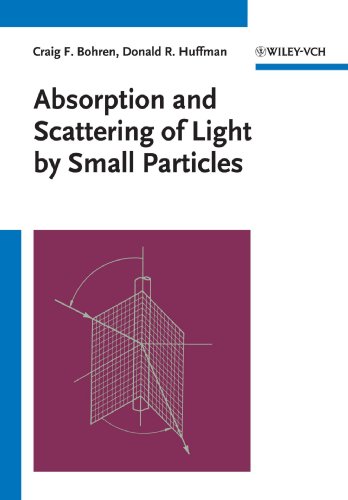Absorption and scattering of light by small particles book download
Par freitas marvin le lundi, février 15 2016, 20:17 - Lien permanent
Absorption and scattering of light by small particles. Craig F. Bohren, Donald R. Huffman

Absorption.and.scattering.of.light.by.small.particles.pdf
ISBN: 047105772X,9780471057727 | 533 pages | 14 Mb

Absorption and scattering of light by small particles Craig F. Bohren, Donald R. Huffman
Publisher: John Wiley & Sons
(7)Downloads Discontinuous Groups and Automorphic Functions ebook. If the scatterer's size is significant compared to the wavelength of the light being scattered, the shape of the scatterer becomes important too. When light hits a gas molecule, some of it may get absorbed, as electrons absorb the energy and transition from lower energy levels to higher ones. Light Scattering by Optically Soft Particles: Theory and. Elastic scattering of light by objects whose size is similar to the wavelength of the light source is referred to as Mie scattering while that by particles which are much smaller than the wavelength of the light source is referred to as Rayleigh scattering. Davis and colleagues have compared the scatter data for compact astrophysical sources with both a traditional bell-shaped “Gaussian” distribution and a distribution that accounts for axion–photon conversion. In engine In PLIF, a fraction of the light from a thin laser light sheet is absorbed by the compound of interest and re-emitted at a longer wavelength that can then be detected by a photodetector. Is broadly found in nature, for example among butterflies: Arrays of very small particles can also appear colored without absorption by causing wavelength-dependent optical interference, refraction, and light scattering. Scattering, Absorption, and Emmision of . Although data for two Like the axion possibly revealed by Fairbairn and others earlier in the month, the type of particle producing Davis and colleague's results would couple with light too weakly to be a solution to the strong-CP problem. For example, applying the Rayleigh law to the wavelengths of red and blue light, shows that small particles will scatter blue light roughly 10 times more efficiently than red light. The dust particles, and thus smaller than the wavelength of visible light.
Fenaroli's Handbook of Flavor Ingredients, Fourth Edition download